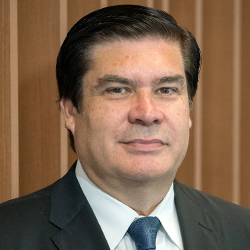Silver Nanowires Demonstrate Unexpected Self-Healing Mechanism
The material has potential for flexible electronics
With its high electrical conductivity and optical transparency, indium tin oxide is one of the most widely used materials for touchscreens, plasma displays, and flexible electronics. But its rapidly escalating price has forced the electronics industry to search for other alternatives.
One potential and more cost-effective alternative is a film made with silver nanowires—wires so extremely thin that they are one-dimensional—embedded in flexible polymers. Like indium tin oxide, this material is transparent and conductive. But development has stalled because scientists lack a fundamental understanding of its mechanical properties.
 Now Horacio Espinosa, the James N. and Nancy J. Farley Professor in Manufacturing and Entrepreneurship at Northwestern University’s McCormick School of Engineering, has led research that expands the understanding of silver nanowires’ behavior in electronics.
Now Horacio Espinosa, the James N. and Nancy J. Farley Professor in Manufacturing and Entrepreneurship at Northwestern University’s McCormick School of Engineering, has led research that expands the understanding of silver nanowires’ behavior in electronics.
Espinosa and his team investigated the material’s cyclic loading, which is an important part of fatigue analysis because it shows how the material reacts to fluctuating loads of stress.
“Cyclic loading is an important material behavior that must be investigated for realizing the potential applications of using silver nanowires in electronics,” Espinosa said. “Knowledge of such behavior allows designers to understand how these conductive films fail and how to improve their durability.”
By varying the tension on silver nanowires thinner than 120 nanometers and monitoring their deformation with electron microscopy, the research team characterized the cyclic mechanical behavior. They found that permanent deformation was partially recoverable in the studied nanowires, meaning that some of the material’s defects actually self-healed and disappeared upon cyclic loading. These results indicate that silver nanowires could potentially withstand strong cyclic loads for long periods of time, which is a key attribute needed for flexible electronics.
“These silver nanowires show mechanical properties that are quite unexpected,” Espinosa said. “We had to develop new experimental techniques to be able to measure this novel material property.”
The findings were recently featured on the cover of the journal Nano Letters. Other Northwestern coauthors on the paper are Rodrigo Bernal, a recently graduated PhD student in Espinosa’s lab, and Jiaxing Huang, associate professor of materials science and engineering in McCormick.
“The next step is to understand how this recovery influences the behavior of these materials when they are flexed millions of times,” said Bernal, first author of the paper.